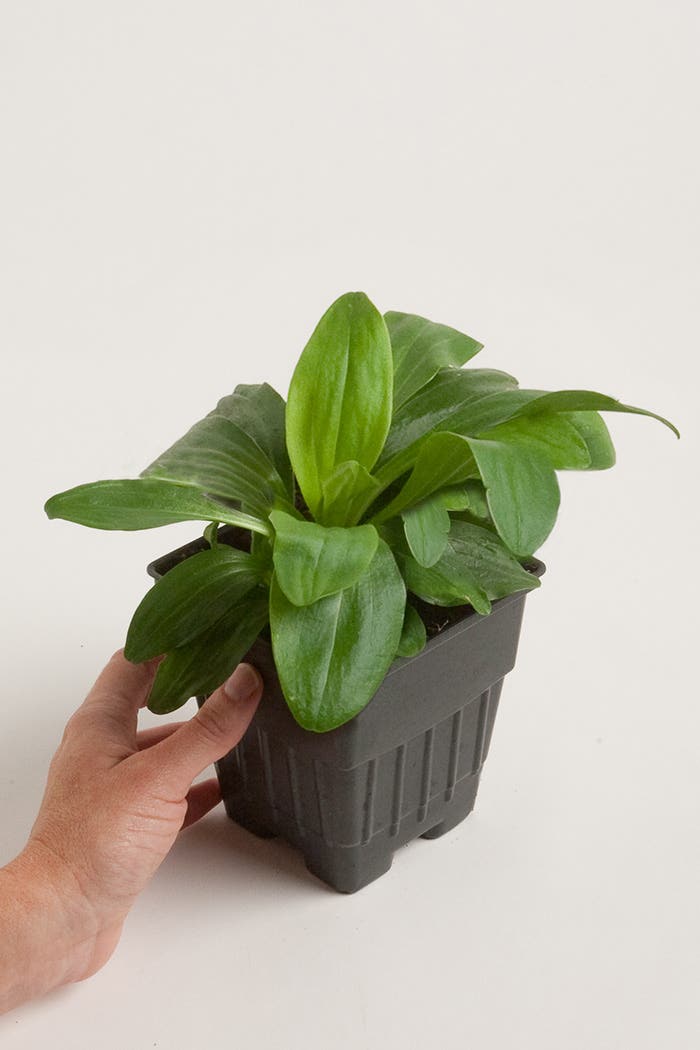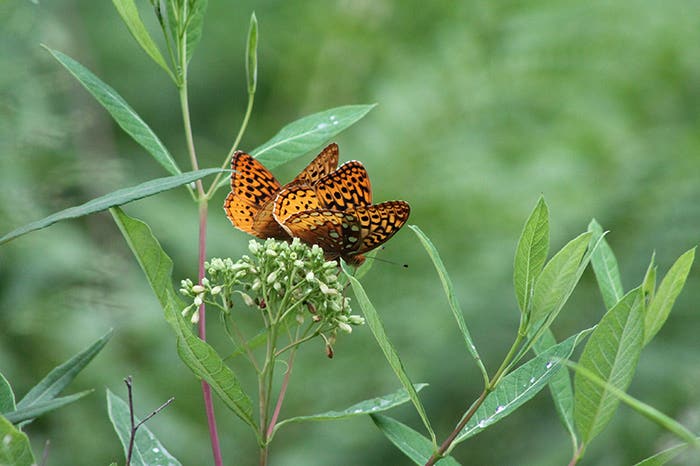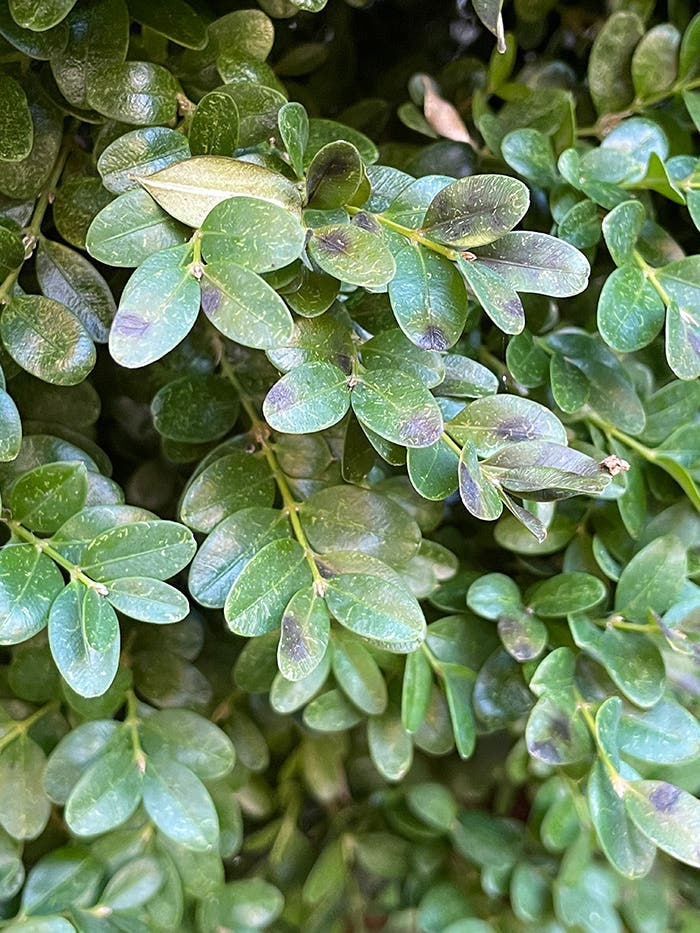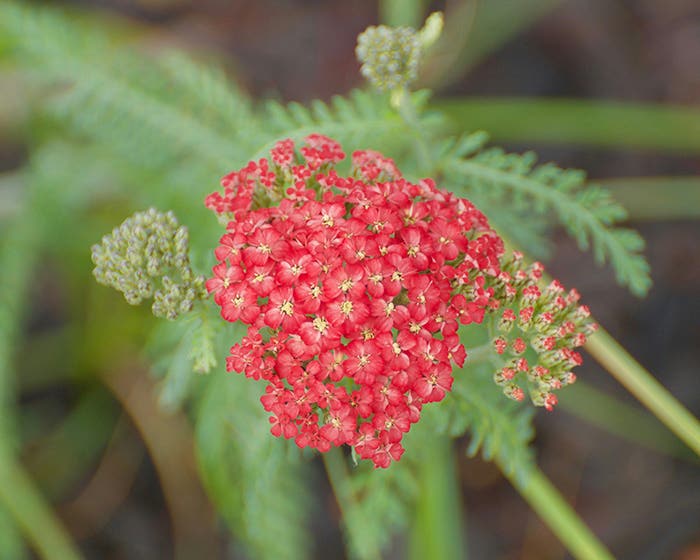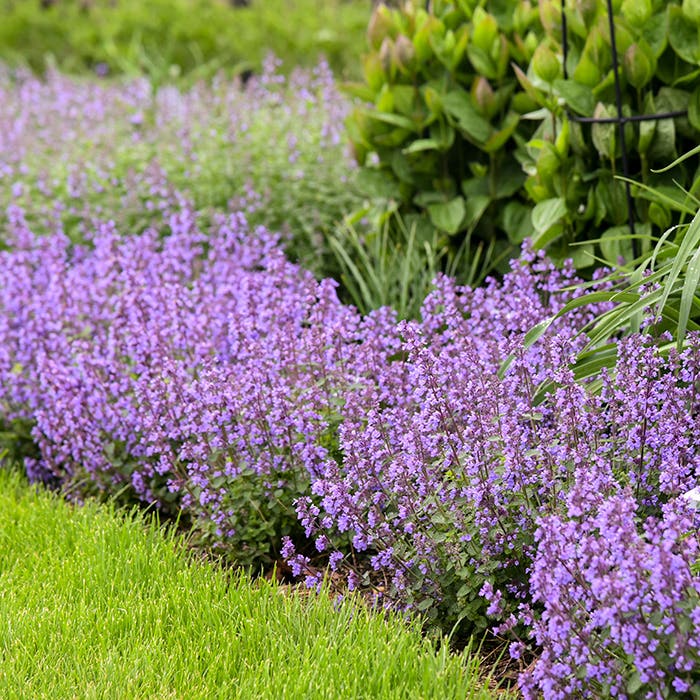Thinning Boxwood
Read how to thin boxwood in early winter to keep it healthy.
Many boxwoods (Buxus spp.) make the majority of their new growth from buds close to the ends of existing branches. This growth pattern means that a boxwood can sometimes develop a dense outer coat of foliage and a sparse interior. To restore a more balanced, lush appearance, perform a special type of pruning called thinning.
Boxwoods are evergreen shrubs. Thinning is important not only for the appearance of the boxwood plant. It also helps keep the boxwood healthy, because it promotes better air circulation to the interior leaves and lets in more sunlight. Boxwoods that aren't thinned—especially English boxwood (B. sempervirens 'Suffruticosa')—can suffer from fungal diseases owing to poor air flow. Boxwoods growing in full sun are usually most in need of regular thinning, as opposed to those growing in part or full shade, since the sun encourages them to form that thick outer layer of foliage. Korean boxwoods (B. microphylla and cultivars) generally do not develop a bare interior the way B. sempervirens does, but they also respond well to thinning.
Thinning can be done at any time of year. If the plant is very bare in the center, it may be best to wait until late winter or early spring. New leaves will fill the bare patches as the weather warms. Alternatively, thin the plant several times over the course of the year rather than in one pass. Many people like to thin their boxwoods in early to mid-December, however, because the trimmings can be used in Christmas arrangements and decorations. Light thinning is best at this time of year; heavy thinning just before very cold weather may make the plant susceptible to winter injury.
To thin boxwoods, simply reach into the plant and snip out stems, removing them evenly throughout the entire body of the plant. The length of the cut stem will depend on the size of the plant. On a small boxwood, you might remove stems two to four inches long. On a boxwood one or two feet wide, pull stems about six inches long. Larger shrubs will usually look fine with stems up to eight inches long pulled. Refrain from cutting the stem back beyond its last set of leaves; not because it will cease to grow (it will resprout, unlike some evergreens that can not regrow from a "dead zone"), but for appearance's sake. Typically you should aim to remove about 10 percent of the branches. After completion the shrub will have very small holes all around its outer surface, and you'll be able to see the interior twigs when you peek through them.
Image courtesy Missouri Botanical Garden PlantFinder.
_________________________________________________________
Choose the best evergreens for your garden with Great Landscape Evergreens.
Use high-quality bypass pruners for the health of your plants and for your comfort.
Take the fear out of pruning with Lee Reich's revised and updated The Pruning Book.


